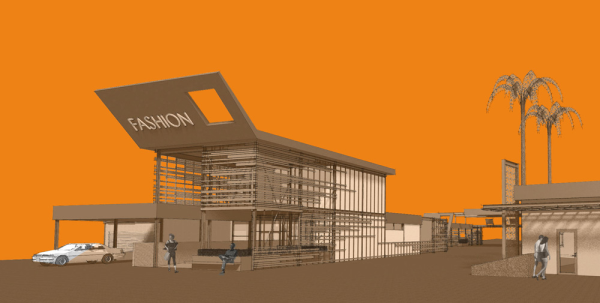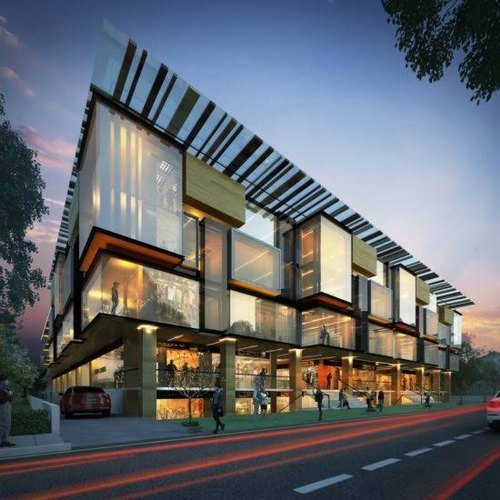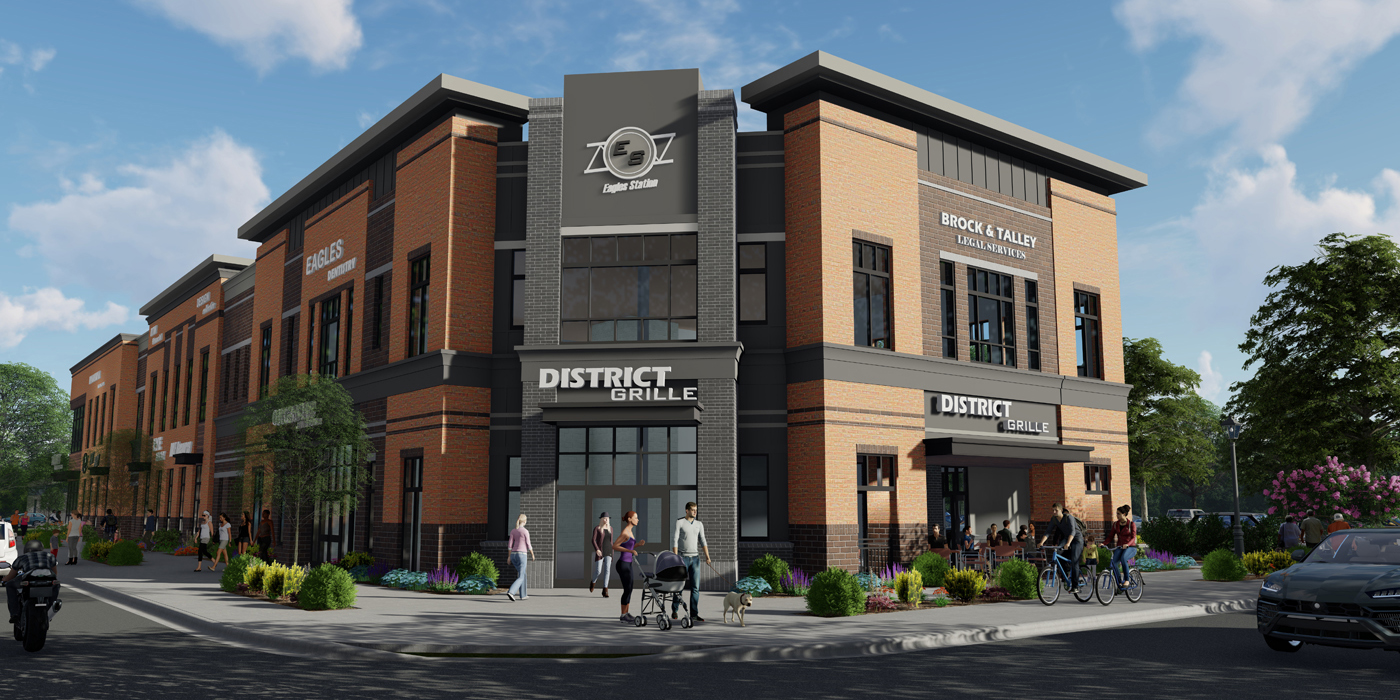Just How Commercial Architects Can Change Your Business Space With Specialist Design Providers
Commercial architects play a crucial role in improving organization settings. Their proficiency in layout can substantially enhance both performance and appearances. By developing rooms that mirror a brand name's identification, they boost functional efficiency and worker contentment. The effect of their job prolongs beyond mere look. Understanding the nuances of cooperation and sustainability can cause transformative outcomes. What particular aspects make these improvements successful?
Understanding the Role of Commercial Architects
Commercial architects play a necessary role fit organization environments that are both practical and cosmetically pleasing. They specialize in making areas tailored to the particular demands of services, making sure that every square foot is made use of efficiently. These professionals integrate components such as spatial layout, lights, and products to improve performance and staff member health. By working together with customers, commercial architects gather understandings right into operational demands and brand name identification, translating these right into innovative designs.Additionally, they navigate complicated building regulations and zoning regulations, making sure conformity while maximizing design capacity. Their expertise reaches sustainability methods, promoting energy performance and eco pleasant materials in their projects. Through their imaginative vision and technological knowledge, industrial architects not only produce attractive rooms but additionally foster atmospheres that promote cooperation and development. Ultimately, their contributions greatly influence the general success and photo of an organization.
Advantages of Expert Design Providers

Customizing Rooms to Your Brand Identity
Tailoring areas to a brand name's identification is crucial for sharing its core values and goal. Commercial architects play a critical role in enhancing a business's aesthetic identity via thoughtful style selections. By straightening building elements with brand concepts, business can create atmospheres that reverberate with customers and employees alike.
Reflecting Brand Worths
Exactly how can a well-designed space symbolize a company's core worths? Commercial architects play a vital duty fit settings that reverberate with a brand's identification. By integrating components such as color design, products, and designs, they create rooms that show the essence of the service. As an example, a tech company could choose open layouts and modern home furnishings to convey technology and partnership, while a luxury brand name may select stylish coatings and intimate spaces to evoke exclusivity and class. Thoughtful design not only improves capability but also promotes a solid link in between workers, customers, and the brand name. Ultimately, a well-crafted setting acts as a concrete depiction of a business's objective and vision, strengthening its values at every touchpoint.
Enhancing Aesthetic Identity
What components can properly elevate a brand name's visual identification within an industrial space? Commercial architects play a crucial duty in integrating layout functions that reverberate with a company's principles. Color design, typography, and products can be purposefully picked to reflect brand name worths while guaranteeing visual appeal. In addition, integrating logo designs and brand images right into the design can develop a cohesive visual narrative. Lights design can better enhance the ambience, leading client understandings and experiences (commercial architects). Design and furniture selections should straighten with the brand name's individuality, whether it's modern, conventional, or cutting-edge. Inevitably, a properly designed commercial area not only draws in clients however also strengthens brand name acknowledgment, creating a long-term impact that cultivates commitment and interaction
Enhancing Performance and Effectiveness
Enhancing performance and efficiency in commercial rooms entails maximizing room application and developing operations that enhance procedures. Architects concentrate on producing layouts that lessen wasted space while facilitating smooth modifications between jobs. This approach not only enhances efficiency yet likewise adds to an extra natural workplace.
Enhancing Space Application
Reliable space use is an essential variable in industrial design, where the design should balance aesthetics with performance (commercial architects). Architects utilize various methods to take full advantage of readily available square footage while guaranteeing that each area serves a distinct function. By analyzing workflow, website traffic patterns, and individual demands, architects can create designs that enhance both staff member productivity and client experience. Multi-functional rooms, adaptable furnishings arrangements, and maximized storage space services are important parts in achieving this goal. Additionally, including natural light and open rooms cultivates an extra welcoming environment, additional raising the energy of the atmosphere. Inevitably, reliable area use not only improves operational effectiveness but likewise adds positively to the general brand picture, dig this making it an essential factor to consider in industrial layout
Structured Workflow Design
Exactly how can a properly designed operations change an industrial room into a hub of productivity? Structured workflow design concentrates on maximizing the physical design and operational procedures within a service setting. By purposefully setting up workstations, conference locations, and resources, architects can get rid of unnecessary movement and enhance cooperation. This thoughtful design advice minimizes diversions and helps with interaction, permitting staff members to focus on their jobs a lot more successfully. Furthermore, incorporating technology right into the operations can even more automate processes, reducing time invested in regular tasks. Consequently, companies experience improved staff member spirits and boosted outcome, creating a vibrant ambience that promotes development. Eventually, purchasing structured process style not only boosts capability but likewise positions a business area for lasting growth and success.
Cultivating Partnership Via Style
Although modern work spaces usually focus on individual efficiency, the style of commercial spaces significantly emphasizes cooperation as an essential vehicle driver of advancement and group cohesion. Architects play a crucial role in developing atmospheres that promote interaction amongst workers. Open up formats, multifunctional spaces, and tactically positioned communal areas motivate spontaneous conversations and conceptualizing sessions.Incorporating aspects such as movable furnishings and adaptable conference room allows teams to reconfigure areas based upon their collective demands. Additionally, integrating modern technology, like interactive white boards and video conferencing tools, improves the capability to interact effectively, regardless of location.Natural light and biophilic style aspects additionally contribute to a much more welcoming ambience, advertising comfort and well-being, which are vital for effective teamwork. By focusing on these facets, commercial architects can produce dynamic environments that not only enhance partnership however additionally drive overall business success.
Lasting Layout Practices in Commercial Design

Case Studies: Effective Transformations by Commercial Architects
The execution of sustainable style techniques has not only improved the approach to commercial architecture but has additionally brought about exceptional makeovers in various organization spaces. One noteworthy situation is the redesign of a technology business's headquarters, where architects integrated natural light and green walls, resulting in enhanced staff member health and performance. This improvement reduced energy costs by 30% and enhanced the company's public image.In another instance, a retailer undertook a full overhaul, utilizing redeemed products and energy-efficient systems. This not only attracted eco-conscious customers yet likewise enhanced foot website traffic by 25%. A 3rd case entailed a business workplace that welcomed an open-plan design with adaptable workspaces, cultivating partnership amongst teams. The architects' concentrate on creating a lively and versatile environment substantially boosted employee contentment. These situation researches exemplify exactly how commercial architects can create impactful spaces that align with organization objectives and sustainability initiatives.
Regularly Asked Concerns
Just How Much Do Commercial Style Solutions Normally Price?
The expense of business style services varies widely, generally ranging from $100 to $250 per hour. Variables affecting rates consist of project complexity, place, and the engineer's experience, making it important for services to obtain detailed price quotes.
What Kinds Of Companies Benefit The Majority Of From Commercial Architects?
Different organizations, including retail, hospitality, and corporate offices, greatly gain from business architects. These professionals improve performance, aesthetics, and brand identification, making certain spaces are enhanced for consumer engagement and employee efficiency, inevitably fostering business growth.
The length of time Does a Commercial Design Job Normally Take?
The timeline for a business design project usually ranges from numerous weeks to numerous months. Factors influencing duration include project complexity, regulatory authorizations, and cooperation amongst stakeholders, every one of which can impact overall conclusion time.
Can I Employ a Business Engineer for Improvements Just?
Yes, working with a business engineer for improvements is viable. Several architects focus on improvement jobs, providing knowledge in optimizing existing spaces while adhering to guidelines and boosting performance, appearances, and overall worth of the company atmosphere.
What Certifications Should I Search for in a Business Architect?

Comments on “A Step-by-Step Guide of the Design Process Followed by commercial architects”